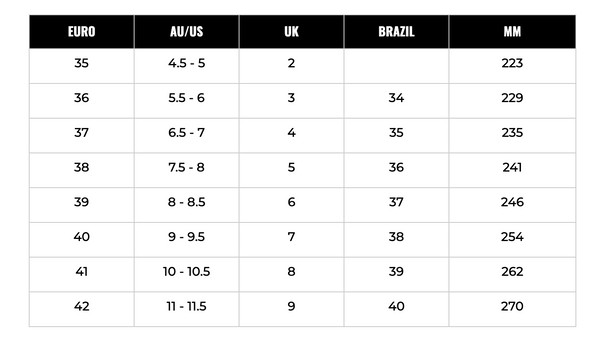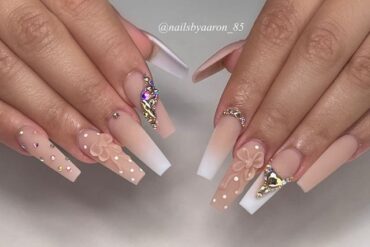Ultimate US to AUS Shoe Size Conversion Guide for Busy Parents
Hey there, super parents! Are you trying to wrangle the perfect pair of shoes for your little one but puzzled by the differences between US and Australian sizing? Fear not, you are in the right place! Our Ultimate US to AUS Shoe Size Conversion Guide is here to take the guesswork out of shoe shopping, so you can focus on more important things (like enjoying that rare cup of coffee while it’s still warm).
The Easy Peasy Conversion Basics
First things first, understanding shoe size conversion is a breeze once you know how it works. Essentially, US and Australian sizes are based on different scales, but they do follow a somewhat linear pattern. This means we can create a simple chart to help translate sizes back and forth.
Simple Chart Quick Glance
Before we dive into the nitty-gritty, here’s a quick glance chart to save the day when you’re in a rush:
- Toddlers: US sizes are roughly 1 size bigger than AUS options.
- Kids: The US size is about 1 size larger than the AUS counterpart.
- Teens/Adults: Conversion can be a bit more complex, often 2 sizes apart.
Keep in mind, these are quick estimates and variations can occur depending on the brand, so always check the specific brand’s size chart.
The Detailed Conversion Explained
We’ll guide you through an in-depth look at how to convert US shoe sizes to Australian sizes, whether you’re shopping for toddlers, youngsters, or teens. Here’s a step-by-step approach to making sure those stylish kicks fit just right:
Measuring Those Tiny Feet
Start by accurately measuring your child’s feet. You can use a shoe size measuring device available at many shoe stores, or simply use a ruler and a piece of paper at home. Place your child’s foot flat on the paper, mark the longest toe and the back of the heel, then measure the distance between these two points for the foot length.
Checking the Sizing Chart
Once you’ve got the foot length sorted out, it’s time to consult a sizing chart. We’ll provide a comprehensive chart below, but for quick reference, here’s how to use the measurements you took:
- Find the closest measurement in either centimeters or inches on the left side of the chart.
- Move horizontally across the chart to find the corresponding US size.
- From the US size, you can then convert to the Australian size.
Note that in some charts, kids’ and adults’ sizes may overlap, so always use the foot length as your primary reference for accuracy.
Understanding the Age and Size Relationship
As kids grow, their shoe size will also change rapidly. To make sure you’re not caught off guard by a sudden growth spurt, here’s a handy age-to-size reference that approximates which shoe size might correspond to different age groups.
- 0-2 Years: Likely starting from an AUS 2 to an AUS 8.
- 2-4 Years: Typically ranging from an AUS 8.5 to an AUS 10.
- 4-6 Years: Usually around an AUS 10.5 to an AUS 12.
- And so on…
Remember, kids are full of surprises, especially when it comes to their growth, so keep measuring regularly, especially when buying new shoes.
Pinpointing the Perfect Fit
It’s about more than just numbers; finding the perfect fit is also about comfort and ensuring enough room for growth. Ideally, there should be about a thumb’s width of space between the tip of the longest toe and the end of the shoe. This extra space allows for natural movement and growth before the next shoe-shopping expedition.
So, there you have it! With our guide in hand, you’re well on your way to shoe shopping success. Stay tuned, because we’re about to dive deeper into the wide world of kid’s footwear, ensuring that your adorable offspring’s toes are cozily enclosed in perfectly fitting shoes. Keep measuring, keep smiling, and most importantly, keep up the great work, parents!

5 Essential Tips for Parents Preparing for US to AUS Shoe Size Conversion
1. Keep Updated Measurements
Children’s feet grow at the speed of light—or so it seems when you’re a parent! Ensure you have up-to-date measurements of your child’s feet. This doesn’t just mean length; consider the width as well for a truly comfy fit. A good rule of thumb is to measure every two to three months for toddlers and every six months for older children.
2. Understand Size Variances
Shoe sizes can be as unique as your little one’s sparkling personality—especially across different brands. That US size 8 you bought last month may not be the same as another brand’s size 8. Always look for size charts specific to the brand you’re interested in. This will reduce returns and the all-too-familiar “shoe shuffle,” as we call it.
3. Factor in the Sock Equation
Don’t forget about socks! It may sound trivial, but the thickness of socks can significantly influence how a shoe fits. If winter is coming and thick, cozy socks are on the agenda, leave a smidgen of extra room. Conversely, for those beach days with thin or no socks, you might size down a tad.
4. Online Shopping Tricks
Let’s face it, online shopping is a savior for busy parents. To refine your online shoe-shopping tactics, look for sites that offer free returns or exchanges. This way, if the size isn’t just right, you can swap them without an extra cost or headache. Also, look for user reviews—other parents’ experiences can be golden when it comes to fit and size feedback.
5. Consider the Shoe Type
Not all shoes are made equal—running shoes, dress shoes, sandals all fit differently, even within the same size bracket. Athletic shoes often require more room for movement, whereas dress shoes may be designed with a snugger fit. This is another time when brand-specific size charts can be your best friends.
Comprehensive US to AUS Kids Shoe Size Chart
Below is a detailed chart to help you convert sizes seamlessly. Keep it handy for a stress-free shopping experience. Remember to match the foot length to the correct row and then find the corresponding US and AUS sizes. Happy shoe hunting!
Note: The sizes in the chart are typical examples and may not represent all brands. Always refer to the manufacturer’s size chart whenever possible for the most accurate conversion.
| Foot Length (cm) | US Size (Kids) | AUS Size (Kids) |
|---|---|---|
| 10.5 | 4 | 3 |
| 11.6 | 5 | 4 |
| 12.7 | 6 | 5 |
| 13.8 | 7 | 6 |
| 14.9 | 8 | 7 |
| 16.1 | 9 | 8 |
| 17.2 | 10 | 9 |
| 18.3 | 11 | 10 |
| 19.4 | 12 | 11 |
| 20.5 | 13 | 12 |
| 21.6 | 1 (Youth) | 13 |
| 22.7 | 2 (Youth) | 1 (Youth) |
| 23.8 | 3 (Youth) | 2 (Youth) |
| 24.9 | 4 (Youth) | 3 (Youth) |
| 26.0 | 5 (Youth) | 4 (Youth) |
Armed with this guide, you’re now a shoe size converting wizard! Just remember, while this chart serves as a great starting point, the best test will always be how the shoe fits on your child’s foot. Comfort is key, and a good fit ensures happy, healthy feet ready for every adventure that awaits them. Keep measuring, keep shopping smart, and most of all, keep making parenting look easy!
For more great articles please see here. For more information see here
Disclaimer
The articles available via our website provide general information only and we strongly urge readers to exercise caution and conduct their own thorough research and fact-checking. The information presented should not be taken as absolute truth, and, to the maximum extent permitted by law, we will not be held liable for any inaccuracies or errors in the content. It is essential for individuals to independently verify and validate the information before making any decisions or taking any actions based on the articles.




